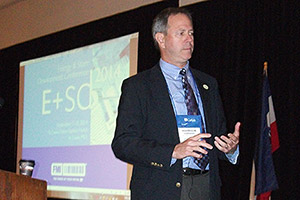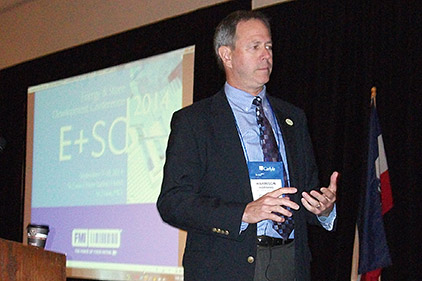So, supermarket owners want refrigeration systems that are energy efficient to hold down costs and pro-environmental for political correctness. But for engineers, contractors, and technicians that approach may not be all that easy, whether bringing a new store online or retrofitting an existing one.
At the most recent Food Marketing Institute (FMI) Energy & Store Development Conference, papers and presentations focused on challenges. At the same time, nearly all were being used in some supermarkets today and all were expected to gain increasing attention as the sector moves away from high-global warming potential (GWP) refrigerants and toward even more efficient equipment.
Comparing Refrigeration Systems
Danny Halel of Hussmann Corp. looked at a case study involving Hy-Vee supermarkets for a refrigeration system comparison.
One point: “You can’t compare apples to apples unless you only have apples. But you can compare commonalities between apples and oranges. So our intent is to generate metrics, derived from commonalities among refrigeration architectures which may provide insight into how those architectures compare.”
He discussed four systems at four Iowa locations: One with open-drive DX racks and evaporative cooling; one with multiple DX racks in a distributed approach; one with MT and LT secondary CO2 racks; and one with distributed DX.
He noted, “There is not one solution for every application.” Among points he brought up:
• Energy impact to the architecture and total store energy is significant when adding doors and LEDs on cases.
• The old assumption of 50 percent of the total electrical load is the refrigeration system is true; however, this can be reduced by paying close attention to the load structure.
• The impact of coefficient of performance (COP) is negatively affected when adding the condenser and evaporator energy; however, this can have a smaller impact by paying attention to loads such as fans including VFDs on condensers, LED lights, and doors.
• And leak management must be considered even in an energy study.
Retailer Experiences

|
| Harrison Horning of Delhaize America/Hannaford looks at the ongoing changes, especially the trend toward CO2 as a primary refrigerant in supermarkets. |
Harrison Horning of Delhaize America/Hannaford looked at the ongoing changes, especially the trend toward CO2 as a primary refrigerant in supermarkets. That means, he said, factoring the refrigerant into “company commitments, pilot projects, planning and budgeting, operation and maintenance, monitoring performance, tracking progress and long-term planning.”
He spoke of a pilot project in this regard at a store in Maine where only CO2 was used in a transcritical approach. In that situation energy performance data was compared with two other stores, one of those using HFC-407A in a DX approach with three racks and full condensing parallel heat reclaim using glycol; and a second store using HFC-507 with three racks and a combination of series and full-condensing parallel heat reclaim direct.
He noted, “Project economics depends on many variables” but “energy performance can be good and maintenance can be manageable.”
And he urged those considering CO2 to look beyond the United States, to where CO2 is more widely used. “We can learn a lot from Europe and other parts of the world.”
Within his company, he said, there are plans for more pilot projects as well as remodels and retrofits for existing systems and equipment at end-of-life. He also said the company is “contemplating an HFC phase-out.”
More CO2 Talk
Benny Smith of Price Chopper Supermarkets talked about the use of CO2 in a cascade refrigeration system installed a few years ago. It took place, he said, when “the timing was good for the sustainable technology and refrigeration manufacturers had a next generation opportunity.”
He noted with a cascade system “the carbon footprint reduction due to the CO2 refrigeration system is 5,132 tons of CO2 equivalent.”
There was a learning curve as with the discovery that “most leaks occurred at the pressure relief valve.”
He also stressed the importance of involving service technicians in the whole process of moving to CO2 from the more familiar HCFCs and HFCs. “There was positive feedback from the techs because we involved the techs early in the project.”
On the mechanical side, “Energy usage is compatible (with more conventional systems) and electronic expansion valve service is greatly reduced. Installation cost is comparable citing $9.63 a square foot for CO2 and $9.61 a square foot for DX.



Report Abusive Comment